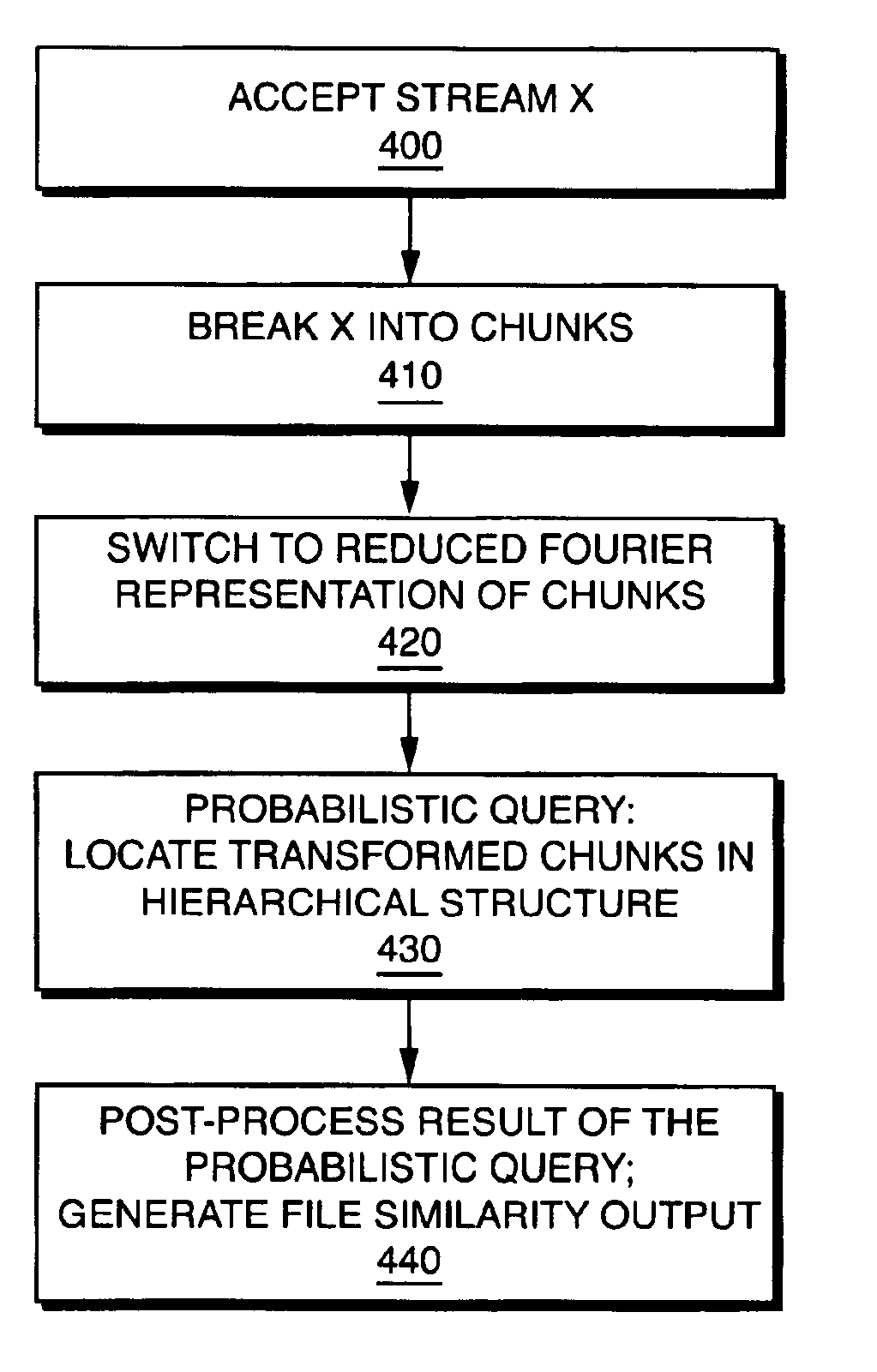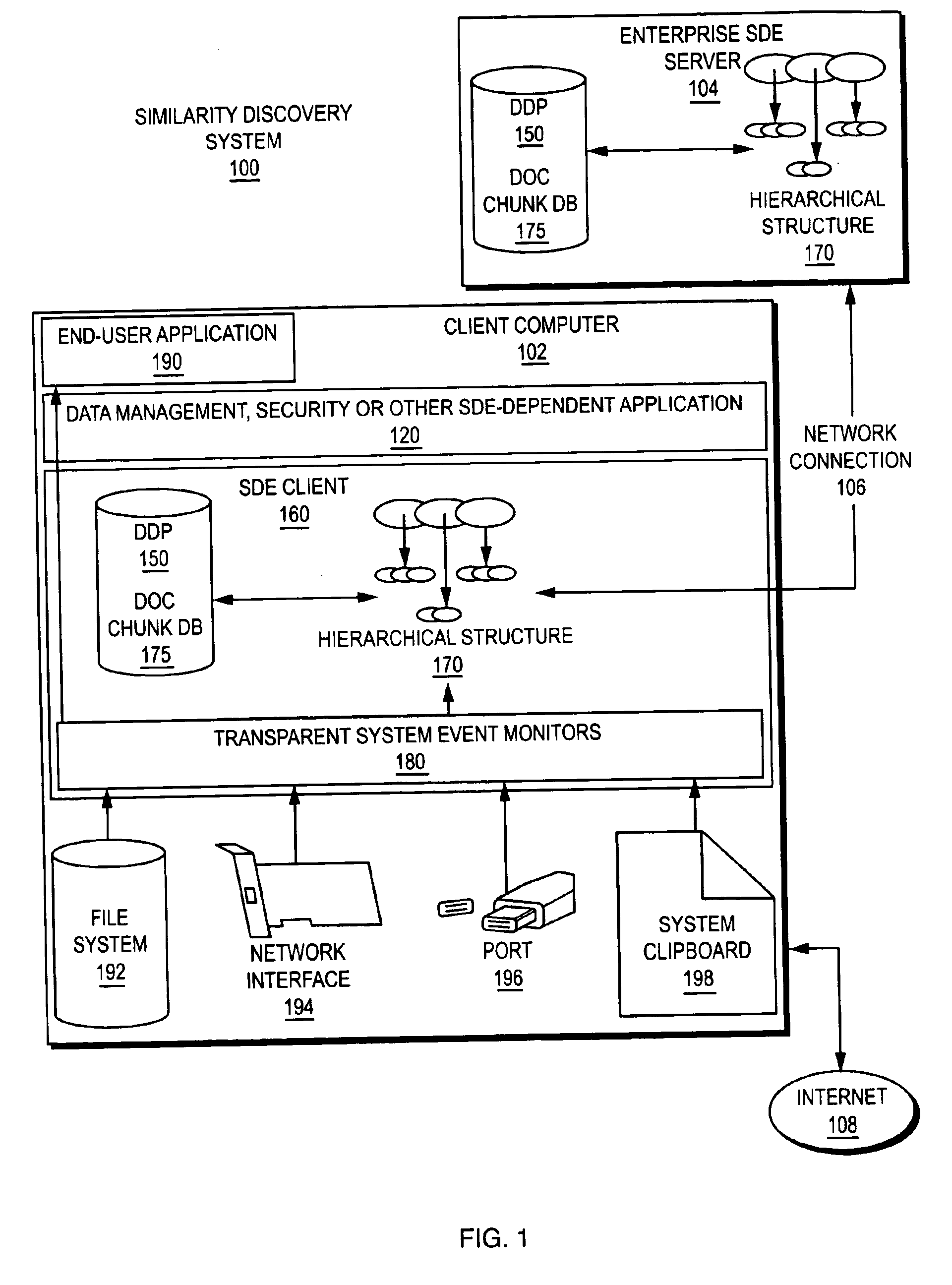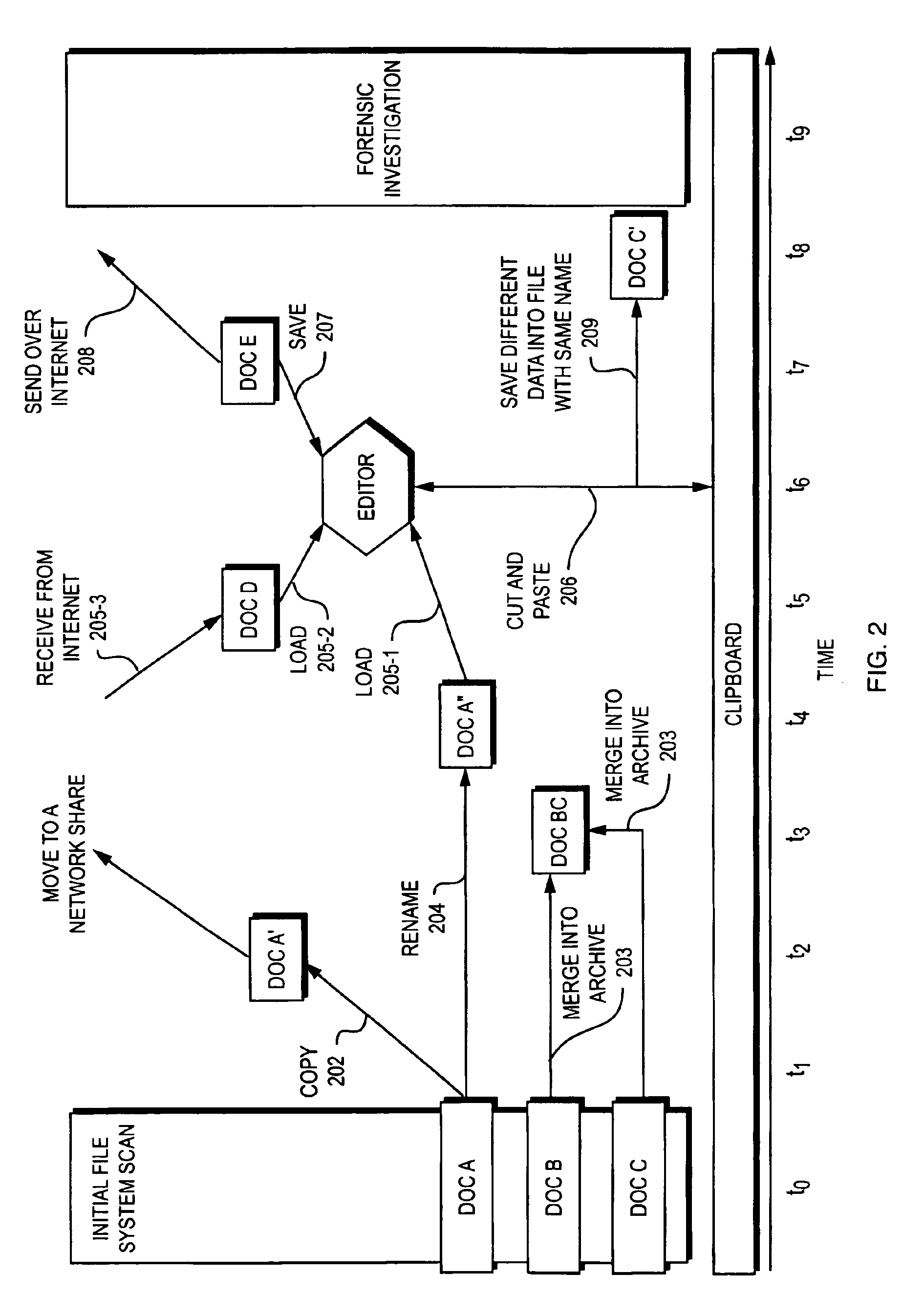Identifying similarities within large collections of unstructured data
a technology of large collections and similarities, applied in the field of identifying similarities within large collections of unstructured data, can solve the problems of inefficiency, accurate or scalable calculation of existing data mining algorithms, and achieve the effect of preventing improper access or the distribution of sensitive data
- Summary
- Abstract
- Description
- Claims
- Application Information
AI Technical Summary
Benefits of technology
Problems solved by technology
Method used
Image
Examples
Embodiment Construction
Introduction to the System Environment
[0029]A high level conceptual representation of a data Similarity Discovery System 100 is presented in FIG. 1. Client 102 and server 104 (if utilized) computers constantly monitor user activity and collect information on data files or other “digital assets” such as document files that contain valuable information. The monitored events only include detecting and recording information about documents being modified (created, copied, moved, deleted, edited, or merged) by the computer operating system (OS) as well as its users. This information is represented as a data structure referred to as the Document Distribution Path (DDP) 150, which is typically implemented as a directed graph where the vertices represent documents and edges describe historic relationships between the documents. The DDP 150 is stored in the database, together with other information on files and their chunks.
[0030]In many cases, OS and networking protocol architecture prevent...
PUM
 Login to View More
Login to View More Abstract
Description
Claims
Application Information
 Login to View More
Login to View More - R&D
- Intellectual Property
- Life Sciences
- Materials
- Tech Scout
- Unparalleled Data Quality
- Higher Quality Content
- 60% Fewer Hallucinations
Browse by: Latest US Patents, China's latest patents, Technical Efficacy Thesaurus, Application Domain, Technology Topic, Popular Technical Reports.
© 2025 PatSnap. All rights reserved.Legal|Privacy policy|Modern Slavery Act Transparency Statement|Sitemap|About US| Contact US: help@patsnap.com



